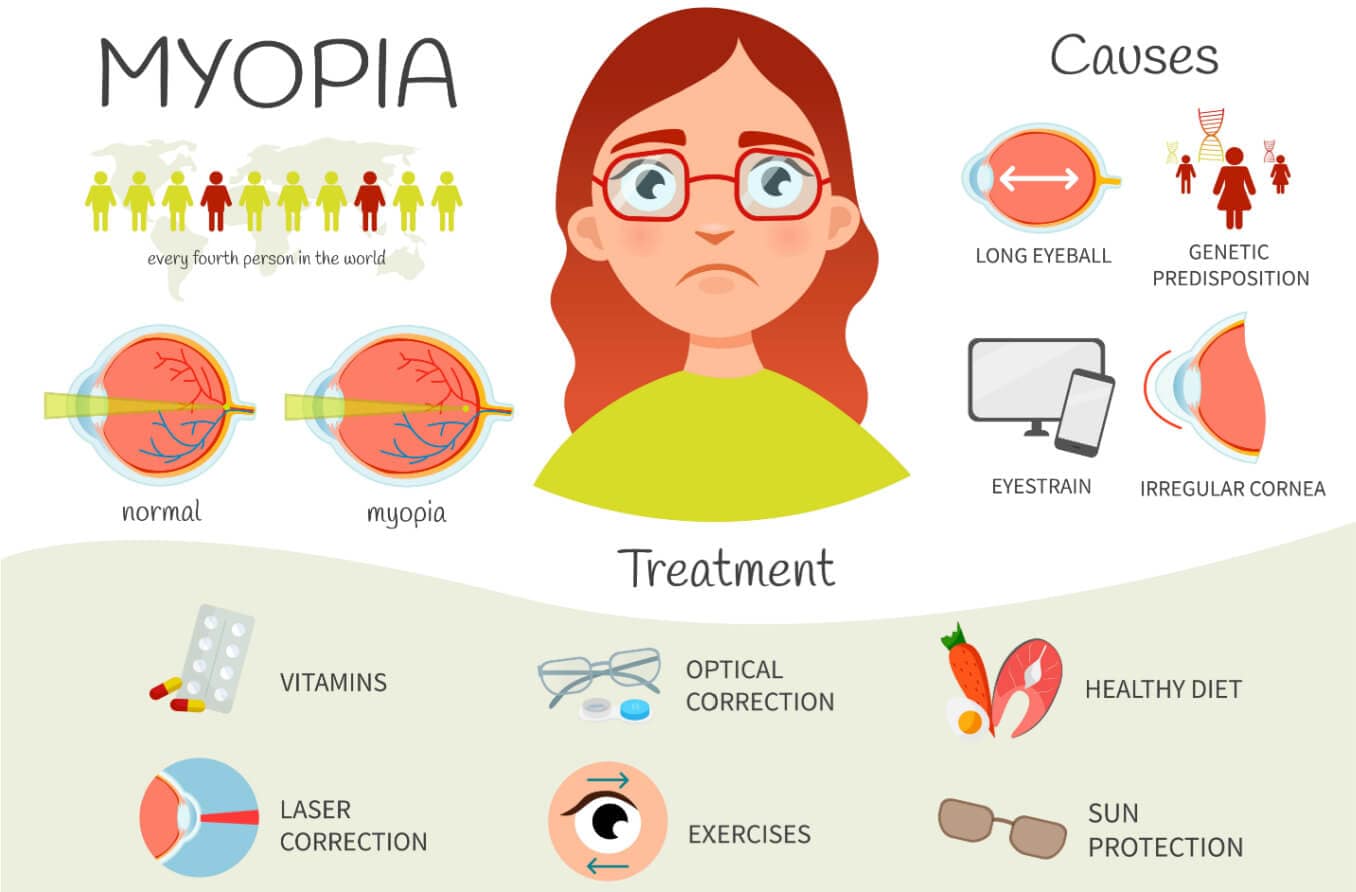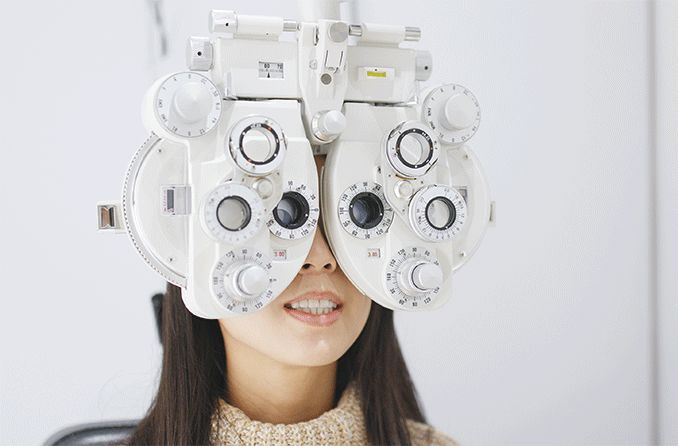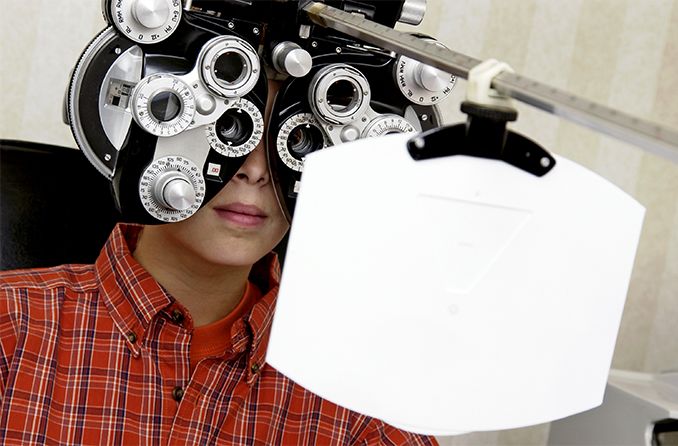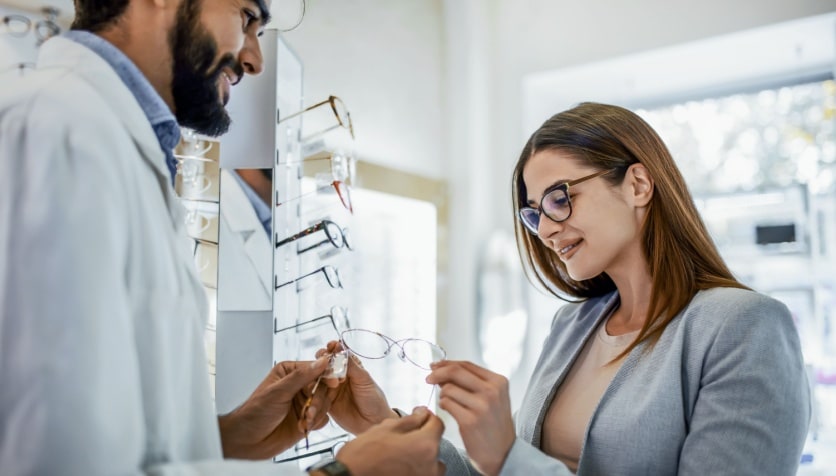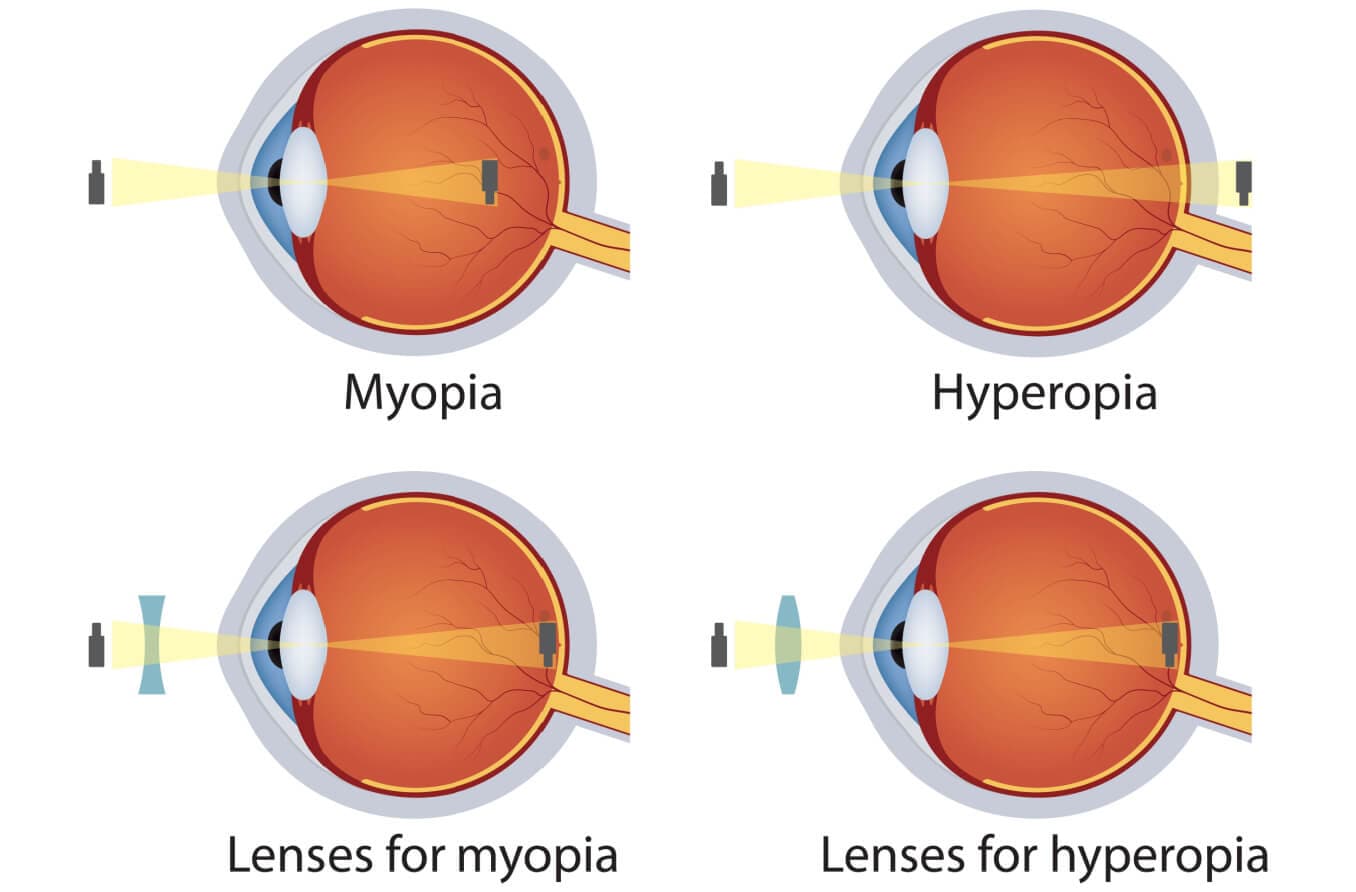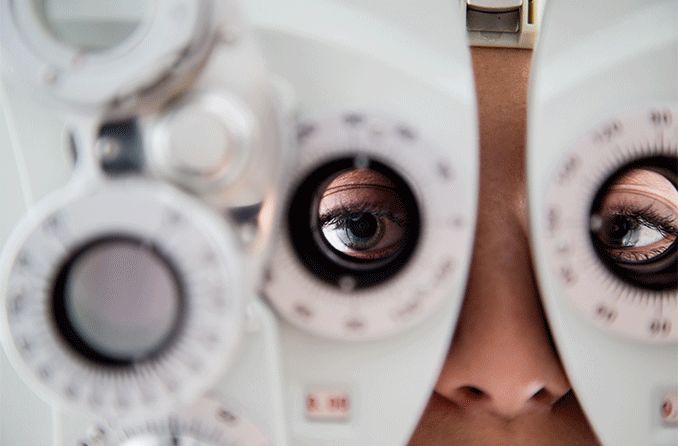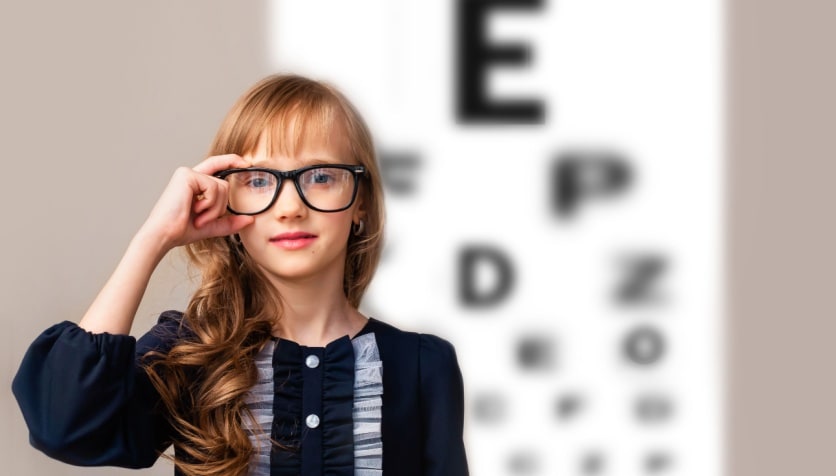What are the different types of myopia?
The most common type of myopia (nearsightedness) is caused by the eyeball becoming too long relative to its focusing power. But other types exist. Different types of myopia can be classified by what causes it, the rate of progression or even the changes to the eye resulting from it.
Nearsightedness is a common vision condition that results in blurry distance vision while near vision remains clear. While all types of nearsightedness have some risk of complications, some types carry a greater risk to vision and eye health. When reading about these complications, it can be confusing or even scary.
Knowing which myopia type you or your loved ones have will help you understand your risk. More importantly, knowing how mild or moderate myopia can develop into high myopia can help you implement strategies to lower this risk.
Axial myopia
Axial myopia results from the eyeball being too long relative to the eye's focusing power. It is the most common type of childhood myopia. Myopia in children is usually due to axial myopia. The axial length of the eyeball is the distance from the cornea to the retina. When the eyeball is too long, light comes to a focus in front of the retina rather than directly on it, causing distant objects to look blurry.
This type of myopia usually begins in the school years and stabilizes by the mid-twenties. Glasses and contact lenses or refractive surgery are typically used to correct myopia. In general, most people with mild to moderate amounts of myopia have an overall low risk of eye complications. However, this risk is much greater for individuals with high myopia.

Refractive myopia
This type of myopia occurs if the cornea or lens is too steeply curved. It is not as common as axial myopia. In rare cases, it can also occur if the lens is placed too close to the cornea.
It is possible to have a combination of axial and refractive myopia.
Progressive myopia
Progressive myopia occurs when an individual with axial myopia (nearsightedness due to elongation of the eye) has a prescription that progresses quickly over time. In some children and young adults, myopia can continue to progress rapidly each year.
The concern is that a rapidly progressing eyeglasses prescription can lead to a high degree of myopia. This is alarming because the risk for sight-threatening complications increases as nearsightedness progresses toward high myopia. These complications can result in visual impairment or vision loss.
About three out of four kids with progressive myopia reach a stable prescription by age 18. It is important to monitor children with progressive myopia and implement myopia control strategies, so they do not progress to high myopia.
READ MORE: What causes progressive myopia in children?
High myopia
Although many people have mild or moderate myopia (prescriptions between -0.25 D and -5.75 D.), some progress to a prescription of -6.00 D or greater. This is considered high myopia. Typically, the younger someone is when they develop myopia, the more likely they are to have high myopia later in life, increasing their risk of future vision-threatening complications.
Individuals with high myopia do not have a risk of visual impairment from the refractive error itself. When someone has high myopia, their risk of pathologic myopia — the development of degenerative changes in the back of the eye — increases.
High myopia can also increase the risk of retinal detachment, retinal tears, early onset of certain cataracts, certain types of glaucoma, posterior vitreous detachment and optic neuropathy.
Some studies have found that about 1 in 4 individuals with high myopia progress to a type of myopia called pathologic myopia.
READ MORE: High myopia: severe nearsightedness
Pathologic (degenerative) myopia
Pathologic myopia is also known as degenerative myopia. Pathologic myopia is the result of progressive, abnormal elongation of the eyeball. The lengthening causes the retina, choroid and sclera in the back of the eyeball to stretch. It often begins in childhood and is believed to be hereditary.
Symptoms of pathologic myopia include:
Blind spots in areas of central vision
Straight lines appear wavy
Difficulty with everyday tasks, such as reading, driving or cooking, due to distorted vision
Decrease in contrast sensitivity
Posterior staphyloma is one of the main structural changes that occur in pathologic myopia. It happens when the sclera thins and bulges, creating distortions in the overlying retina.
Other eye complications are also associated with pathologic myopia, such as myopic maculopathy. This condition damages the part of the eye responsible for detailed central vision, resulting in decreased visual acuity. Maculopathy can also occur in eyes that do not have high myopia, although this is not common.
Being a high myope does not always mean you will develop pathological myopia. It increases the risk of developing it. According to the International Myopia Institute, pathological myopia in children and adolescents is not common. Studies show that about 1% of Caucasians have pathologic myopia, and the risk increases with age.
Myopia of prematurity
Some preterm babies can develop myopia, referred to as myopia of prematurity (MOP). This type of myopia is caused by a very different process than common myopia that affects children in the first and second decade of life — axial myopia.
Myopia in preterm infants is caused by changes to the front of the eye — the cornea, lens and anterior chamber. MOP is associated with low birth weight, severe retinopathy of prematurity (ROP) and side effects of the treatments for ROP.
According to the American Academy of Optometry, premature babies should see an eye doctor early and frequently. The AAO recommends that babies get their first comprehensive eye exam between ages 6 and 12 months of age. For premature babies, this is especially important.
Putting it together: How the different types of myopia are related
The types of myopia can get confusing. Here’s a brief summary and an example of a school-aged child, Sophie, that illustrates how the different myopia types are related.
Axial myopia – The most common type. It results from the eyeball being too long relative to the eye’s focusing power.
Progressive myopia – An increase in axial myopia. It occurs over a relatively short period.
High myopia – A high myopic refractive error that can result from progressive myopia. It is associated with an increased risk of pathologic myopia.
Pathologic/degenerative myopia – Associated with structural changes to the back of the eye. It can lead to permanent vision impairment and blindness.
Now, let’s learn about Sophie’s myopia:
Sophie has common childhood axial myopia that progresses quickly over time, becoming progressive myopia. Sophie’s rapidly progressing prescription has led to high myopia. Because of her high myopia, Sophie’s risk of pathologic myopia and the development of degenerative changes in the back of the eye increases.
Is there anything Sophie’s parents can do to slow down the progression of myopia?
Good visual habits and myopia management strategies implemented by an eye doctor have been shown to slow down the rate and onset of myopia progression in children.
READ MORE: Myopia (nearsightedness): Causes, progression and management
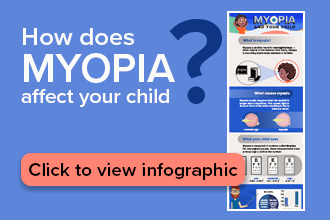
Click here to view infographic
Strategies for managing myopia
The first step is to schedule a comprehensive eye exam. An eye doctor can evaluate which myopia control strategy is most appropriate depending on the age and needs of your child.
These strategies include:
Myopia-control eyeglasses and contact lenses
Daily application of low-dose atropine eye drops
Overnight orthokeratology
Eye doctors also recommend frequent vision breaks during extended near work to prevent eye strain.
Here are a few strategies to decrease eye strain:
Follow the 20-20-20 rule – Look at something 20 feet away for 20 seconds every 20 minutes.
Follow the elbow rule – Make a fist next to your face and extend your elbow toward the screen. Ensure that the screen is farther than the distance between your hand and elbow.
Limit screen time – The American Academy of Child and Adolescent Psychiatry (AACAP) offers the following guidelines for daily screen time:
Ages 18 to 24 months – Limit to watching educational programs with a caregiver
Ages 2 to 5 years – Spend one hour or less on weekdays and up to 3 hours on weekends
Ages 6+ – Implement screen habits that limit screen time
Multiple studies have also found that increased time spent outdoors during the day reduces the risk of myopia development and progression. So, encourage healthy habits in your child. This can include activities such as spending less time indoors looking at devices and more time outdoors in the daylight.
To keep the eyes healthy, remember that a healthy and nutritious diet with whole foods, fruits and vegetables is good for your eyes and body. In addition, incorporate exercise into your daily routine. Wear sunglasses when spending time outdoors.
Remember that routine, comprehensive eye exams are the first steps to maintaining healthy eyes and managing myopia.
READ MORE: Myopia control: How to manage myopia and slow its progression
